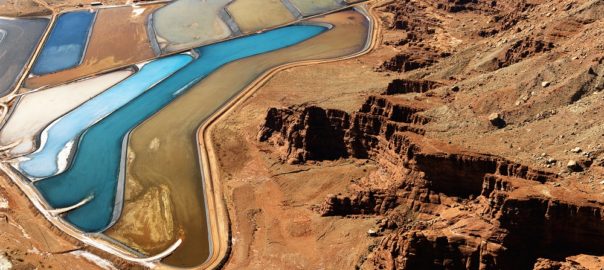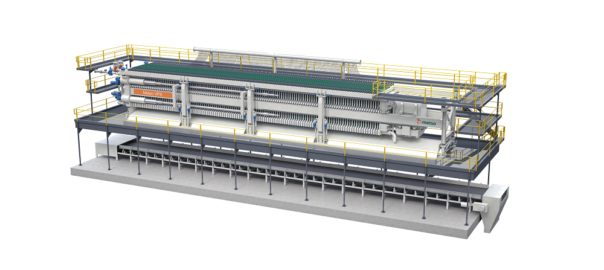Metso might have just launched a new tailings management concept, but the management of tailings and dewatering solutions are nothing new for the mineral processing company.
Helsinki-headquartered Metso developed its first VPA filter for mining in the 1980s – the maiden unit being delivered to the Greens Creek mine in Alaska (now owned by Hecla Mining) – and has since dispatched hundreds of units to mines across the globe.
In addition, Metso has a long history of designing and manufacturing tube presses and other complementary dewatering solutions; its current membrane-type filter press offers pressures up to 100 bar for particularly difficult dewatering applications, such as china clay, while its inclined plate settler (IPS) and dewatering spirals offer separation and thickening options for miners.
The VPX™ filter is the launch product that comes with this new tailings management concept, but there is much more to this focus than a lone invention.
As Niclas Hällevall, VP, Process Equipment for Metso, told IM: “It is no longer a matter of just finding the most technically-suitable equipment or solutions to do the job. It is about how to transform mining into a sustainable and long-term development.”
Metso is intent on “challenging the conventional” in this regard. This includes looking at its own approach to designing mineral processing equipment – ensuring all products use, recycle and recover water in a responsible manner – as well as the industry’s way of thinking. Instead of pursuing short-term fixes, such as implementing tailings monitoring solutions using sensors, the company thinks miners should prepare for a future where wet tailings dams are eradicated from mine sites. Dry stacking – or filtering – tailings is the end goal Metso is pursuing.
This unconventional mindset is also apparent in the design of Metso’s VPX filter. Instead of equipping the machine for high throughputs alone, Metso has built the filter to manage varied input materials and to offer pressures up to 25 bars (and perhaps even higher pressures).
Metso has eliminated the use of hydraulics on this new filter, instead using electromechanical screws to achieve the high-pressure closing that turns wet material into dried cakes with as low as 7% moisture content in some applications. This electromechanical switch could cut operating costs due to a reduction in maintenance requirements, according to the company. The modular design, meanwhile, allows the filter to be scaled to any size, plus fit it into a container for easy logistics.
An advanced control system (ACS) using self-learning functions provide customers with a solution to monitor the operation of the filter, while there are plans to equip the machine with artificial intelligence functionality to monitor the conditions of the input material and select the optimal dewatering route.
Also, the filter press offers a variable and very fast opening and closing time thanks to the robust rack and pinion system, thus providing the high-capacity dewatering large mines require.
Metso is ready with its “future-ready” solution – a pilot VPX filter is currently in Sala, Sweden, about to be taken on a roadshow. This unit has already been tested on a mine tailings application in Sweden, IM understands, with the company expecting many more trials over the next year.
As Lars Gustavsson, Business Manager, Beneficiation Solutions, explained, the company’s filter press trial plan includes taking small size samples in its laboratory before graduating to the full-scale pilot unit, which is equipped with the same ACS and sensors commercial units will have. “This gives customers all they need to build the business case,” he said.
The Metso tailings management concept goes further: Hällevall says the use of the Metso IPS and Metso MHC™ hydrocyclone, in circuit with a VPX filter, results in less use of chemicals and energy in the dewatering process, on top of water recoveries of up to 90% in some applications. This is achieved by controlling the feed and optimising the filtration process. “We simply separate the stream into fine and coarse streams by using Metso MHC hydrocyclones,” Hällevall says, explaining that the overflow – the fines stream – is directed to the Metso IPS thickener, with the coarse stream going direct to the filter.
With two separate streams, the company can decide the optimum way to filter and dewater the material, with the IPC, in particular, offering the most “superior setting of fines using minimum amounts of flocculants and energy”, Hällevall says.
This new concept has allowed Metso to become one of only a few mining OEMs talking up the use of pressure filters – and accompanying separation and thickening infrastructure – to reprocess legacy tailings dams. The ability to “turn waste into value” could enable mining companies to not only clean up these dams, decrease their footprint and improve their sustainability credentials with local and other stakeholders, it could also allow them to generate additional revenue from the recovery of valuable minerals and metals.
This could potentially provide the positive investment case miners need to start making wet tailings dams a thing of the past.
Just 5% of all fresh tailings generated in 2018 were dewatered in some way, according to Metso’s data. With its own “future-ready” solution now in place, the company is doing its bit for industry to ensure this figure continues to rise.








